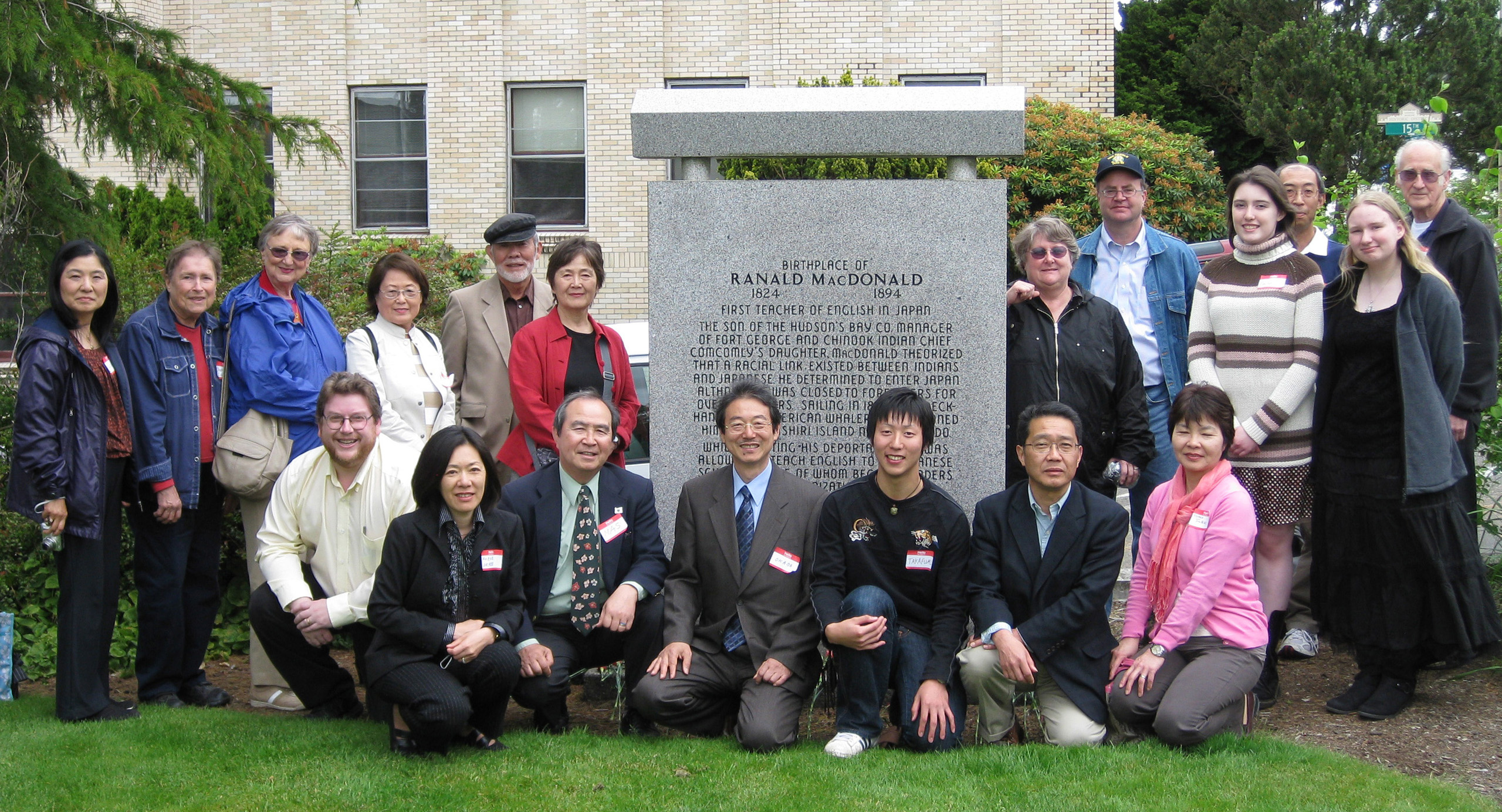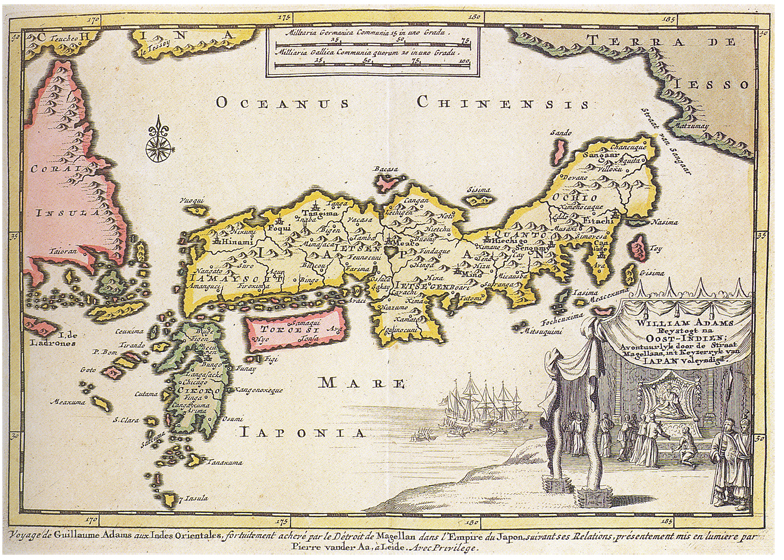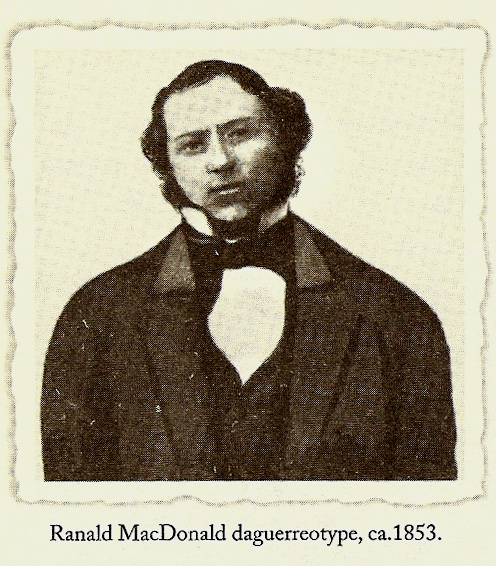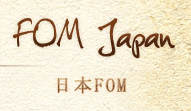The day was fair, the turn-out was gratifying and the conversation lively at the annual membership meeting of the Friends of MacDonald held in Astoria, OR over the weekend. We greeted many old friends and welcomed several new members while enjoying a delicious lunch at the “Baked Alaska” restaurant (shameless plug) on the waterfront overlooking the wide mouth of the Columbia River and the blue-green hills of Cape Disappointment and Chief Comcomly’s Chinook territory in Washington — the same view eyed by the likes of Meriwether Lewis and William Clark in 1805-06 as well as Ranald’s father, Archibald McDonald in November of 1821, the year he arrived at (then) Fort George.

We were honored to welcome Consul General of Japan in Portland, Takamichi Okabe and his wife, Kozue. According to Richard Read of the Oregonian newspaper, Mr. Okabe spent three months in Baghdad as an involuntary “guest” of Saddam Hussein during 1990, when Iraqi forces invaded Kuwait. [He had been serving as first secretary in Japan’s embassy in Kuwait.] During his next foreign assignment – in Kenya – Mr. Okabe and a colleague braved warfare in Somalia to investigate opportunities for humanitarian aid there. Later in Nepal, Mr. Okabe was posted in Kathmandu when members of the royal family were massacred at the palace. Most recently Mr. Okabe served four years as Consul General of Japan in Auckland, New Zealand. In Portland, he is joined by his wife, Kozue, and we all hope that Mr. and Mrs. Okabe will have the opportunity to enjoy the peace and beauty of the Pacific Northwest.
FOM was happy that Mac Burns, Executive Director of CCHS was able to take time away from his busy schedule to attend the meeting. Mac, who was fresh off the “Goonies 25th Anniversary” celebration the week before, noted that over 100 Goonies fans showed up for the grand opening of the Oregon Film Museum in Astoria the previous Saturday, and mentioned that people had come from all over — France, Japan, and from across the United States. Mac also passed out buttons and other information about the upcoming “Astoria 1811-2011 Bicentennial Celebration” happening next year. A link to that website can be found here: http://www.astoria200.org/ . If you have never visited Astoria, FOM encourages you to do so – it is a sleepy little coastal town with a lot of secrets and surprises, not to mention a rich history.
Executive Director of CCHS was able to take time away from his busy schedule to attend the meeting. Mac, who was fresh off the “Goonies 25th Anniversary” celebration the week before, noted that over 100 Goonies fans showed up for the grand opening of the Oregon Film Museum in Astoria the previous Saturday, and mentioned that people had come from all over — France, Japan, and from across the United States. Mac also passed out buttons and other information about the upcoming “Astoria 1811-2011 Bicentennial Celebration” happening next year. A link to that website can be found here: http://www.astoria200.org/ . If you have never visited Astoria, FOM encourages you to do so – it is a sleepy little coastal town with a lot of secrets and surprises, not to mention a rich history.
Mr. Tadakazu Kumashiro, Charter Member of the Friends of MacDonald, was also in attendance. After his retirement, Mr. Kumashiro, or “Kuma” (the Bear) as he likes to be called, joined the Peace Corps in 2001 and was stationed in Namibia for a couple of years working for the Namibian government where he promoted AIDS education by visiting schools. Kuma-san gave talks to students, teachers and school principals about what they should be doing to prevent an AIDS pandemic. Kuma-san reports that he had to be hospitalized himself four times while he was there – probably, he noted, because of the unfamiliar germs he encountered. Mr. Kumashiro rather depreciatingly says he thinks he became ill because of his “old age” – he was 67-69 at the time – but having met him myself I have to say he is one of the most vigorous and energetic “seniors” I have ever met [both mentally and physically].
A big “thank you” to Jim Mockford for bringing his laptop so the group could access the new web page. It was the first time most of the FOM members had seen it (we hope it won’t be the last time!) We all appreciated that the Baked Alaska staff worked so hard to make sure their wireless network was workable for us. And we missed the presence of Bruce Berney, who was back in Portland celebrating his grandson’s birthday.
During the meeting an interesting, if not recurring, question was presented by Consul General Okabe, e.g., what was the status of Ranald MacDonald’s “citizenship” at the time of his landing on Rishiri Island in 1848? A second comment [also in the form of a question] was presented by Mr. Okabe and was definitely food for thought – was Ranald MacDonald really the first teacher of English in Japan?
 Map of Japan drawn by William Adams, circa 1600
Map of Japan drawn by William Adams, circa 1600
The Consul General’s second question referred to one William Adams, who, as the British pilot major of the Dutch trading ship Liefde (“Love” or “Charity”) landed off the island of Kyushu in April 1600. [The true story of Will Adams was the basis of the romantic novel Shogun, written by James Clavell and published in 1975; Adams’ adventures were also documented in the historical novel Daishi-san written by Robert Lund in 1961.] According to one source “ … soon after Adams’ arrival in Japan, he became a key advisor to the shogun Tokugawa Ieyasu and built for him Japan’s first Western-style ships. Adams was later the key player in the establishment of trading factories (in Japan) by the Netherlands and England. He died in Japan at age 55, and has been recognized as one of the most influential foreigners in Japan during this period.”
William Adams – known in Japan as Miura Anjin – may have been the first Englishman [Briton] to set foot in Japan; from historical information [including writings from Adams’ own journal] it seems likely that it was the Anjin who needed an interpreter [the ever-present Portuguese Jesuits, in this case] to make himself understood. Prudence dictates that circumstances – and the Japanese people – taught their language to Will Adams, rather than the other way around.
Regarding Ranald MacDonald being the firs t American to “set foot in Japan” [the way Will Adams was the first Englishman to do so] we know this just isn’t so. There were Americans who had visited Nagasaki while in the service of the Dutch during the late 1700’s. In the mid-1800’s there were scores of American whaling ships in the Sea of Japan, and historical record tells of some crew members that had either been shipwrecked off the Japanese coast or had deserted their vessel to seek their fortunes ashore. As far as is known, however, Ranald MacDonald was the first American to intentionally go to Japan for the express purpose of learning about the Japanese people and their language and to teach English to them, and to perhaps ‘work’ as an interpreter. As to the question of Ranald’s citizenship, regardless of the fact that Fort George was under a British flag in 1824, it cannot be denied that half of Ranald’s DNA came from a Chinook Indian mother, a fact that made him a truer “American” than any geographical accident of birth. Later in his life, through both choice and residence, MacDonald became sufficiently “American” enough to justify that we may say that Ranald MacDonald was the first American to leave his mark upon the people and the nation of Japan, and the first native-English-speaking individual to teach the English language there.
t American to “set foot in Japan” [the way Will Adams was the first Englishman to do so] we know this just isn’t so. There were Americans who had visited Nagasaki while in the service of the Dutch during the late 1700’s. In the mid-1800’s there were scores of American whaling ships in the Sea of Japan, and historical record tells of some crew members that had either been shipwrecked off the Japanese coast or had deserted their vessel to seek their fortunes ashore. As far as is known, however, Ranald MacDonald was the first American to intentionally go to Japan for the express purpose of learning about the Japanese people and their language and to teach English to them, and to perhaps ‘work’ as an interpreter. As to the question of Ranald’s citizenship, regardless of the fact that Fort George was under a British flag in 1824, it cannot be denied that half of Ranald’s DNA came from a Chinook Indian mother, a fact that made him a truer “American” than any geographical accident of birth. Later in his life, through both choice and residence, MacDonald became sufficiently “American” enough to justify that we may say that Ranald MacDonald was the first American to leave his mark upon the people and the nation of Japan, and the first native-English-speaking individual to teach the English language there.
***







